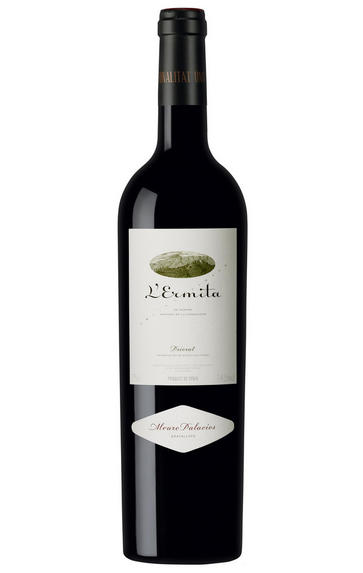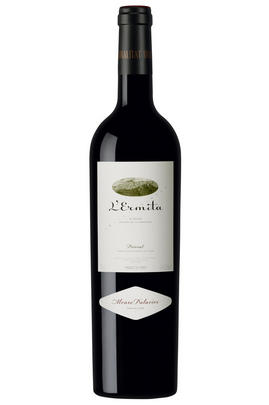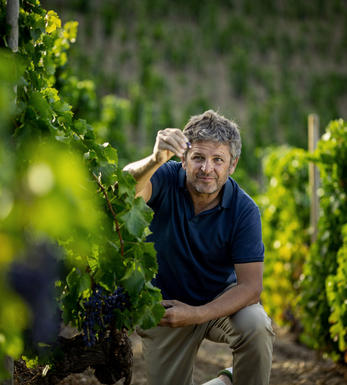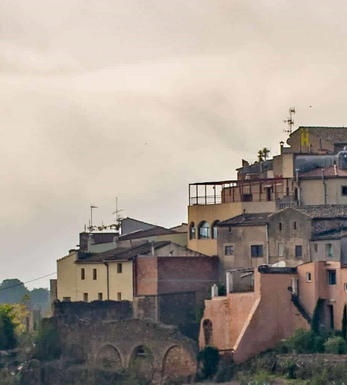
2001 L'Ermita, Álvaro Palacios, Priorat, Spain

Critics reviews
Robert M. Parker, Jr. - 26/04/2004
About this WINE

Alvaro Palacios
Alvaro Palacios, whose family owns the prestigious Rioja Bodega, Palacios Remondo, spent two years at Château Pétrus before setting up on his own in Priorat in 1989. From the outset, he set out to produce world-class wines using fruit from extremely low-yielding old vines and applying ultra-modern winemaking techniques.
The cream of the crop is the single vineyard wine L'Ermita, which was first produced in 1993. It is a blend of 80% Garnacha, 15% Cabernet Sauvignon and 5% Cariñena, all aged in new French barriques for up to 20 months. It is bottled unfiltered. It has intense concentration, enormous depth and a complexity which is simply staggering.

Priorat
Priorato, or Priorat, is one of the stand-out Spanish wine regions, with an extraordinary leap in wine quality, reputation and price over the 1990s. This small wine appellation, with 1,700 hectares of vines and just over 60 bodegas, lies to the west of the province of Tarragona in Catalonia.
It includes the municipalities of Scala Dei, Gratallops and Falset, where vines grow on steep terraces at varying altitudes of 100 to 700 metres. The climate is continental, and the region blessed with an exceptional schistous terroir (mostly llicorella with layers of slate and quartz). This schist is part of the same stratum found in the finest vineyards of the Douro, Toro and Ribera del Duero. It provides ideal conditions for growing vines and also contributes to the much-lauded mineral-rich character of Priorato’s wines.
The region’s wines were revolutionised through the efforts of René Barbier. In 1989 he joined forces with a group of eight other winemakers to produce wine from eight plots (or clos), planting the best grapes using modern methods, and harvesting at extremely low yields. This original group included such distinguished bodegas as Alvaro Palacios (Finca Dofi), Costers del Siurana and Mas Martinet.
The group later split up, but the legacy and the international acclaim their wines generated has attracted significant interest and investment in the Priorato region. It is now recognised as one of the great fine wine regions in Spain, rivalling Rioja and Ribera del Duero. The Priorat wines are typically powerful and full-bodied, with a warm, ripe fruitiness and impressive levels of concentration and minerality. The wines are made in all categories from Joven to Gran Reserva, undergoing the same oak ageing as Rioja.
The efforts of the Barbier group proved that old-vine, low-yielding Cariñena and Garnacha is the most planted variety here, followed by Garnacha. Both provide the backbone of the region’s wines, augmented by international varieties such as Merlot, Cabernet Sauvignon and Syrah.
White varieties (i.e. Chenin Blanc, Macabeo, Garnacha Blanca, Viognier and Pedro Ximénez) occupy less than five percent of the vineyard area.
Recommended Producers:
Combier Fischer Gerin (Trio Infernal), Clos Figueres, Alvaro Palacios (Finca Dofi)

Grenache/Garnacha
Grenache (Noir) is widely grown and comes in a variety of styles. Believed to originate in Spain, it was, in the late 20th century, the most widely planted black grape variety in the world. Today it hovers around seventh in the pecking order. It tends to produce very fruity, rich wines that can range quite widely in their level of tannin.
In many regions – most famously the Southern Rhône, where it complements Syrah and Mourvèdre, among other grapes – it adds backbone and colour to blends, but some of the most notable Châteauneuf du Pape producers (such as Château Rayas) make 100 percent Grenache wines. The grape is a component in many wines of the Languedoc (where you’ll also find its lighter-coloured forms, Grenache Gris and Blanc) and is responsible for much southern French rosé – taking the lead in most Provence styles.
Found all over Spain as Garnacha Tinta (spelt Garnaxa in Catalonia), the grape variety is increasingly detailed on wine labels there. Along with Tempranillo, it forms the majority of the blend for Rioja’s reds and has been adopted widely in Navarra, where it produces lighter styles of red and rosado (rosé). It can also be found operating under a pseudonym, Cannonau, in Sardinia.
Beyond Europe, Grenache is widely planted in California and Australia, largely thanks to its ability to operate in high temperatures and without much water. Particularly in the Barossa Valley, there are some extraordinary dry-farmed bush vines, some of which are centuries old and produce wines of startling intensity.


Buying options
Add to wishlist
Description
The flagship offering, the 2001 lErmita, is produced from 60-year old, head-pruned Grenache (85%) vines and 15% old vine Carignan and younger vine Cabernet Sauvignon. Yields were a meager 15 hectoliters per hectare in 2001. This 500-case cuvee, aged in 100% new French oak, represents the essence of Priorat as well as this particular vineyard source. Alvaro Palacios practices malolactic fermentation in barrel, and bottling after an egg white fining and no filtration. The black/purple-colored 2001 boasts an extraordinary aromatic profile of charcoal, blackberries, raspberries, kirsch, melted licorice, and espresso. Full-bodied and unctuously-textured, with sweet tannin and abundant quantities of fruit as well as glycerin, this is a remarkably well-balanced wine of great intensity and formidable aging potential. Anticipated maturity: 2007-2020.
Robert M. Parker, Jr. - 26/04/2004
wine at a glance
Delivery and quality guarantee